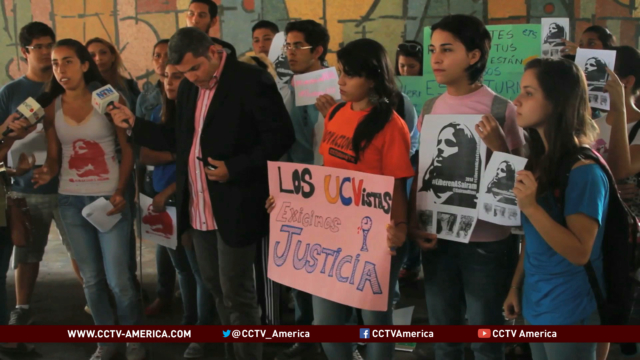The World Bank is showing increasing interest in hearing what millennials in Venezuela think about their country. During a conference about youth and government, they discussed Venezuela’s record-high inflation which has many young people struggling. The World Bank says Venezuela is one example of the economic extremes in Latin America. CCTV America’s Martin Markovits reports.

There’s an exodus going on as many middle and upper-class students flee Venezuela. It’s so bad that Luis Cisco, a recent college grad, was waiting on line at the Irish Consulate to see if his visa was approved. It could be his ticket out of Caracas.
“There is no work now. I can’t find a job. While crime is another thing. You have to always be worried that someone is going to try to steal your phone. You’re in a country where you have to always be looking over your shoulder to make sure everything is ok,” Cisco said.
The World Bank met with the group on Tuesday to talk about these and other concerns facing the youth in Latin America. Venezuela, which has the highest inflation rate in the Americas, is one place where there might not be an easy fix. Prices have become so distorted that a McDonald’s Big Mac combo costs $47 on the country’s lowest official currency rate.
Earlier this year, student protest leader Tammy Suarez joined the largest opposition demonstrations that rocked the county. She said the low pay for professional workers was unacceptable. The minimum wage in the country is 2900 bolivares a month, or around $480 at the fixed government rate. But in real life, U.S dollars trade for ten times as much on Venezuela’s black market, which means minimum wage is only about $50 a month.
Supporters of President Nicolas Maduro believe these students have not appreciated the social progress the poor have gained under socialist rule. Education spending increased significantly while Venezuela is one of the few countries with a completely free public university system.
But this highlights the polarization and class divisions among the youth. Many of those who are moving abroad come from the upper and middle classes and are the ones who could afford luxuries that youth in low-income barrio neighborhoods could only dream of.
 CGTN America
CGTN America
